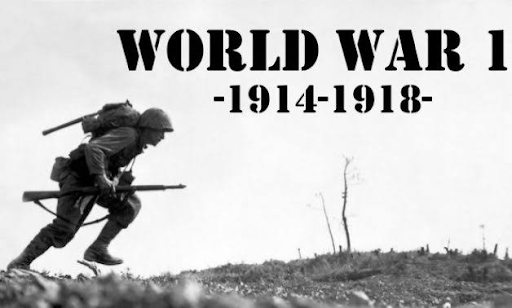How it's started ?
World War I, which took place from 1914 to 1918, was triggered by a complex interplay of factors, including nationalism, imperialism, militarism, and a network of alliances between various European powers. The immediate cause of the war was the assassination of Archduke Franz Ferdinand of Austria-Hungary in June 1914, which led to Austria-Hungary declaring war on Serbia. The conflict quickly escalated as the existing network of alliances drew more countries into the fray. These alliances included the Triple Entente (France, Russia, and the United Kingdom) and the Central Powers (Germany, Austria-Hungary, and the Ottoman Empire). Tensions, rivalries, and territorial disputes among these nations contributed to the outbreak of the war, leading to a devastating global conflict that ultimately reshaped the political landscape of Europe and the world.
Who were part of it?
World War I was a global conflict that involved a significant number of nations across various continents. While the two main alliances were the Allies and the Central Powers, the war's impact extended to several other countries and regions. Some further elaboration on the involvement of certain nations is as follows:
The Allies, comprising the Triple Entente, saw the participation of France, the United Kingdom, and Russia. The entrance of the United States into the war in 1917 brought considerable manpower and resources to the Allied cause. Italy joined the Allies in 1915, primarily to fulfill territorial ambitions. Japan, an ally of Britain, seized German possessions in China and the Pacific. Other nations such as Belgium, Serbia, Romania, and Greece also aligned with the Allies, either due to territorial concerns or shared interests.
The Central Powers, consisting of Germany and Austria-Hungary, had initially sought to preserve the status quo in Europe. The Ottoman Empire, which joined the war on the side of the Central Powers in 1914, aimed to protect its territories and assert its influence in the Middle East. Bulgaria, seeking territorial gains, allied with the Central Powers in 1915.
Moreover, numerous other countries around the world, including various European colonies in Africa and Asia, were drawn into the conflict due to their colonial ties with the warring powers. The war's impacts were felt globally, leading to widespread social, economic, and political changes that shaped the course of the 20th century.
Financial Cost
The financial cost of World War I was staggering. While precise figures vary, it's estimated that the total cost of the war, including direct and indirect expenses, was in the range of $186 billion to over $400 billion in 1914-1918 US dollars. This astronomical sum included military expenditures, reconstruction costs, war-related debts, and various economic losses incurred by the participating nations. The war had a profound impact on the global economy, leading to massive debts for many countries involved and significantly affecting post-war reconstruction efforts and economic stability.
Leaders
During World War I, several key political and military leaders played crucial roles in guiding their respective nations and alliances. Some prominent leaders during the war were:
1. Allied Powers:
United Kingdom: Prime Minister David Lloyd George and later Winston Churchill
France: President Raymond Poincaré and later Georges Clemenceau
Russia: Tsar Nicholas II and later Alexander Kerensky
United States: President Woodrow Wilson
2. Central Powers:
Germany: Emperor Wilhelm II and Chancellor Theobald von Bethmann-Hollweg
Austria-Hungary: Emperor Franz Joseph I and later Emperor Karl I
Ottoman Empire: Sultan Mehmed V and later Mehmed VI
Bulgaria: Tsar Ferdinand I
These leaders made critical decisions and shaped the course of the war, both politically and militarily, influencing the strategies, policies, and diplomatic efforts of their respective nations during this turbulent period in world history.
Who were winners ?
The Allied Powers emerged victorious in World War I. The Central Powers, which included Germany, Austria-Hungary, the Ottoman Empire, and Bulgaria, were eventually defeated. The signing of the Armistice of Compiègne on November 11, 1918, marked the end of the fighting and signaled the defeat of the Central Powers. The Treaty of Versailles, signed in 1919, officially ended the state of war between Germany and the Allied Powers. The treaty imposed significant territorial losses and reparations on Germany and laid the groundwork for the subsequent peace settlement and the establishment of the League of Nations, an international organization aimed at maintaining world peace.

Comments